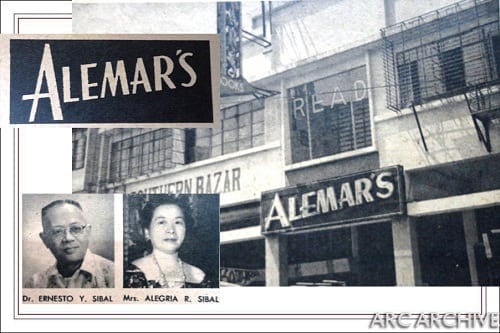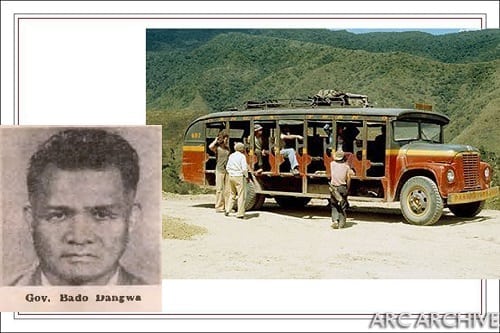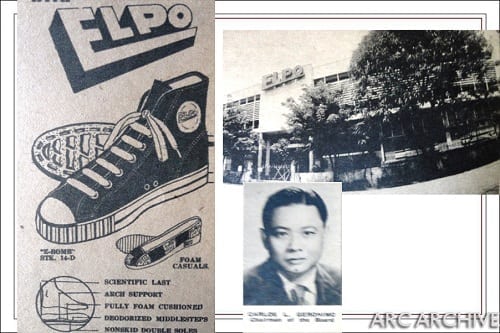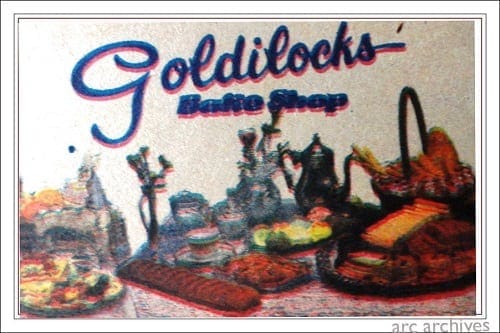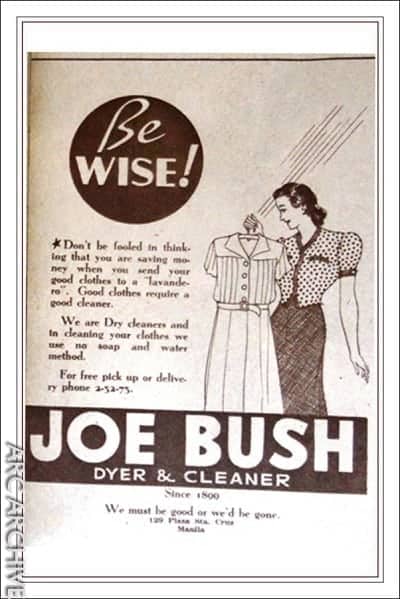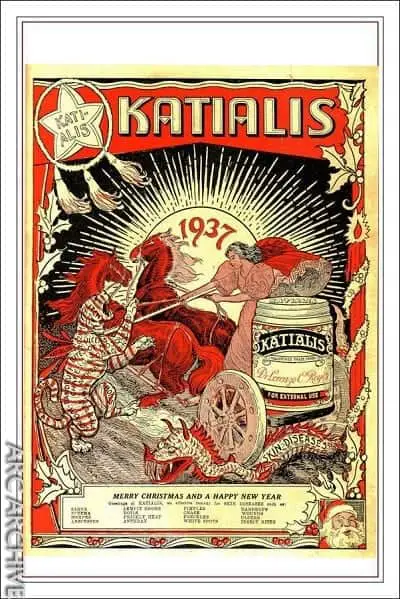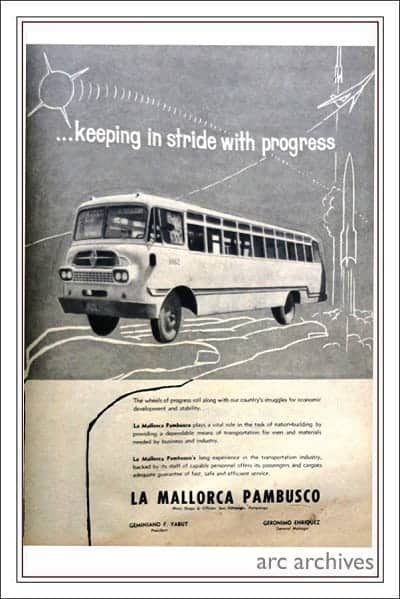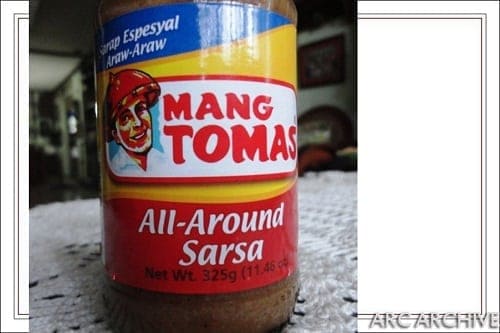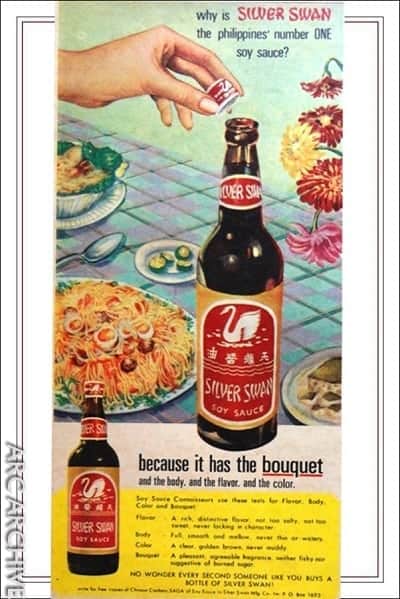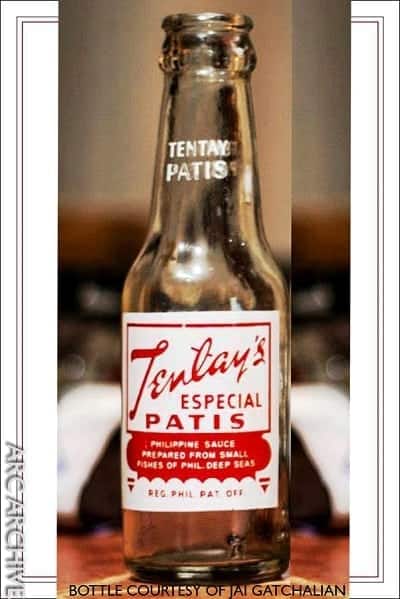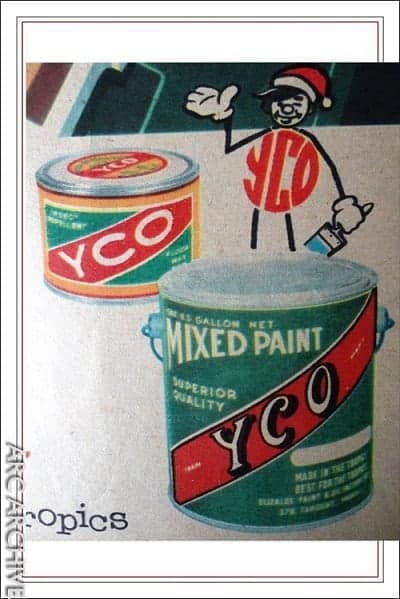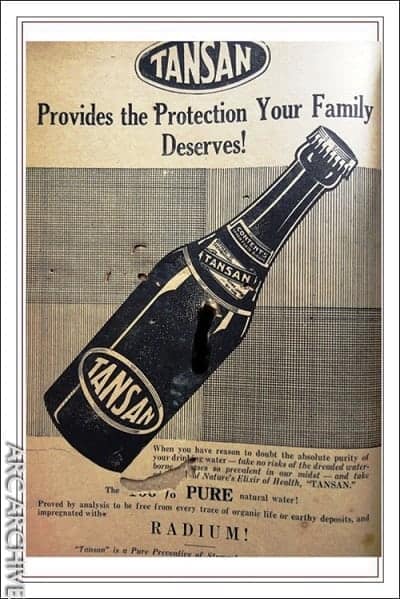13 Amazing True Stories Behind Classic Filipino Brand Names
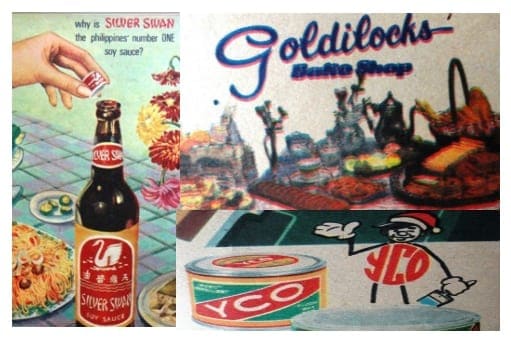
Kodak. Frigidaire. Thermos. These are but a few brand names which, through years of familiarity, have been absorbed into our language and used freely every day. Who would think that these names were just invented words, creatively coined to describe a product?
Here are a few fascinating origin stories of popular Philippine brand names, and the interesting behind-the-factory accounts of how they came to be.
Also Read: Famous Filipino Brands with Surprising Origins
1. Alemar’s
When couple Dr. Ernesto and Alegria Sibal started selling American books from a one-table store in 1945, little did they know that their business would grow into “the biggest and most modern bookstore in the Far East” in the ’50s and ’60s.
Alemar’s was derived from Mrs. Sibal’s name, ALEgria, and the first given name of the Sibal daughters, MARia. The bookstore, in its heyday, had its main store on Rizal Avenue and branches in Ermita, Recto, Quezon City and Makati. It also ventured into printing and publishing in 1950, through its Phoenix Press and Phoenix Publishing House.
READ: 29 Things You’ll Never See in Manila Again
Alemar’s carried more than just books—local, imported, textbooks, used books– it also sold school and office supplies, toys, men’s, ladies’ and children’s wear, home accessories, magazines and more. Central Book Supply, a division specializing in law books, was also put up. Unfortunately, with more aggressive competition from National Bookstore and with heirs leaving for the U.S., Alemar’s started closing its shops in the 1980s.
2. Dangwa Transportation Company
Dangwa has become synonymous with blooms and flowers, so that when one needs them for special occasions, one is directed not to Dimasalang St. but to “Dangwa,” where the buses that drop these flowers all the way from Baguio have their terminal.
Also Read: The Fascinating History of Baguio’s Iconic Lion
The bus line owes its name to Igorot maverick Bado Dangwa, a La Trinidad Agricultural School graduate. His ambition to be a teacher was put on hold when his school principal, James Wright, convinced him that there was a better future in the transportation business.
To get him started, Wright provided the cash-strapped Dangwa with 5 Chevrolet cars discarded by the North Garage transport service. Dangwa was suddenly in business, using these cars to ply the La Trinidad-Baguio route. Eventually, he would grow his fleet from just 3 cars in 1928 to 173 vehicles at the onset of World War II.
Related Article: From Mountain Boy to Governor: The Incredible Story of Pitapit
After the war where he served as a guerrilla leader, he put the Dangwa Transportation back on its feet, and which continues in business today with its modern fleet of air-conditioned buses. Dangwa would later become the governor of the Mountain Province.
3. Elpo Rubber Shoes
ELPO, the famous maker of rubber shoes in the 50s and 60s is a diminutive of “El Porvenir Rubber Products, Inc,” founded by Don Tomas Geronimo, “the Father of the Philippine Rubber Shoe Manufacturing Industry.”
Upon his death in 1940, Geronimo’s son Carlos took over, until the company suffered when the war came and destroyed the factory and machines. In 1946, Carlos rebuilt the business, producing 2,000 pairs of rubber shoes a day.
READ: 14 Beloved Pinoy Products That Are No Longer Available
By the start of the 1960s, Elpo shoes were being produced at the rate of 4,000 pairs daily. When it opened its 13,000 sq.m. Caloocan compound, Elpo was regarded as the biggest and most modern rubber shoe factory in the Philippines with over 500 employees.
4. Goldilocks Bakeshop
Goldilocks was the product of 3 Leelin sisters (and sister-in-law) who made a successful bakeshop-restaurant business out of their passion for pastry-making.
The Leelin sisters—Milagros and Clarita–and sister-in-law Doris opened their bakeshop in a small apartment row on Pasong Tamo and called it “GOLDILOCKS”—a name suggested by sister Maria Flor, after a fairy tale character. It was easy to recall, appealed to children and it bore the color of prosperity.
Related Article: 6 Sweet Facts About Favorite Pinoy Candies
What started as a 5-member staff that included two helpers has grown into a successful and progressive national enterprise, serving not just home-baked goodies but also restaurant menu items.
5. Joe Bush Fabric Dye
In 1899, American Joe Bush put up clothes cleaning and dyeing at Plaza Sta. Cruz, Manila. The shop simply bore his name and the slogan: “Take That Stain to JOE BUSH—The Cleaner and Dyer That Pleases” But it was the dyeing service that proved to be so popular that by the 1920s, the proprietor emphasized that specialty service by branding his shop “Joe Bush Dyer & Cleaner.”
Also Read: 11 Filipino Slang Words With Surprising Origins
The shop also sold dye powder in paper sachets bearing his name, for easy do-it-yourself coloring projects at home. As late as the psychedelic tie-dyed 1970s, people called commercial powder dyes as “dyobus,” an unconscious tribute to the man who colored our world!
6. Katialis Skin Ointment
The most successful local skin ointment in history was formulated in the 1930s by Dr. Lorenzo C. Reyes and mixed by his chemist brother, Manuel, at his Locre Laboratorio in San Lazaro, Manila.
The name of the topical ointment was coined from “KATI”(itch) and “ALIS” (go away), and was widely marketed as an effective solution to skin diseases such as “tagihawat, anan, anghit, buni, alipunga, bungang araw, bulutong tubig, balakubak, sunog sa araw, masamang butlig, ulsera, sugat, pekas, galis, pigsa, butlig pagkatapos mag-ahit, sigid ng lamok, surot at iba pang maliit na hayop”.
READ: Top 10 Pinoy Health Myths You Thought Were True
Katialis was available in small jars and was one of the first medicine brands advertised as being Philippine-made. Its whimsical ads showed allegorical figures like angels, biblical characters (the 3 Kings, for instance, bearing Katialis jars as gifts) and wild animals (to represent various skin ailments). After over 80 years, Katialis is still available in the market today.
Did you know? After concocting Katialis for 10 years for his brother, Manuel struck it on his own and came up with a copycat brand, “Balatkinis” in 1947, which did not quite take off.
7. La Mallorca-Pambusco Transportation Co.
The story of the transportation empire of the 50s and 60s—La Mallorca Pambusco—began in 1926 with a shop in Macabebe, Pampanga called La Mallorca Bakery. Owner Don Fernando Enriquez wanted to make the bakery operations more efficient, so he bought a second-hand truck as a delivery vehicle.
Macabebe residents requested access to the vehicle that they used in conveying commodities to and from Calumpit. The Enriquez family realized the need for adequate land transportation facilities, so Don Fernando got another vehicle to service the same route. When the business proved viable, the Enriquezes established the La Mallorca Transportation Co.
By eliminating competition (Enriquez acquired Bulacan’s Abtranco and Villanueva Transit and its biggest competitor, Pampanga Bus Company, all in 1951), the giant company gained full control of operations in Pampanga, Bulacan, Bataan, and Nueva Ecija. La Mallorca-Pambusco ceased operation when it was subsequently bought by Pantranco.
8. Mafran (and Jufran) Banana Catsup
The revolutionary technology of making banana catsup was invented by Magdalo V. Francisco in 1938. It was a cheaper alternative than tomato catsup as bananas abound in the Philippines, and the taste was found favorable by Filipinos.
In 1942, in the midst of World War II, Francisco produced banana catsup in commercial quantities and named it Mafran, derived from his contracted name (MAgdalo + FRANcisco) which he registered with the Bureau of Patents. Francisco sought funding from Tirso T. Reyes to expand his business and thus, the Universal Food Corporation (UFC) was formed in 1960.
Related Article: Maria Ylagan Orosa–A war heroine, banana ketchup inventor, and the first Filipino nutritionist
Internal conflicts forced Francisco to leave and set up Jufran Food Industries, which manufactured Jufran Banana Catsup, named after son Magdalo Jr. or Jun, hence “JUFRAN.” In 1996, UFC was acquired by Southeast Asian Foods Inc. (SAFI), known today as NutriAsia, which continues to make Mafran and Jufran sauces.
9. Mang Tomas All-Around Sarsa
The name behind the Philippines’ famous lechon sauce brand—Mang Tomas —belonged to a real person who started a lechon shop in his La Loma neighborhood in the 1950s: Tomas de los Reyes.
His early patrons included sabungeros from the nearby La Loma cockpit, but word-of-mouth spread the news about his delectable lechons and expanded his clientele to include VIPs, like Pres. Ramon Magsaysay. His bestselling lechons were slathered with his famous liver-based Sarsa ni MANG TOMAS which he himself concocted.
The lechon sauce proved to be another hit, and the rights were bought by the owners of the popular Aristocrat Restaurant. In 1991, Southeast Asia Food Inc. (now NutriAsia) became the new owners of the Mang Tomas lechon sauce brand and was repositioned as an “all around-sarsa” bottled in the familiar clear bottles and labeled with a familiar character trademark of a man in a salakot.
10. Rufina Patis
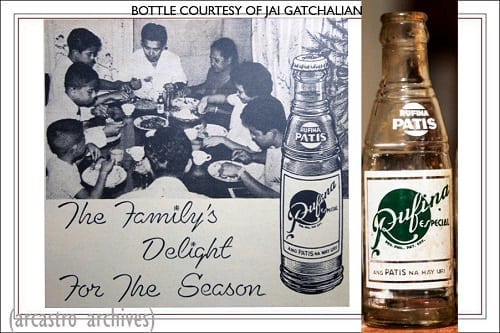
The oldest documented fish sauce brand in the country is Rufina Patis, which widow Rufina Salao Vda. de Lucas was said to have prepared as early as 1900.
The fish dealer from Malabon would make bagoong stored in clay jars. The mix of fish and salt resulted in a flavorful sauce that improved the taste of dishes. Thus began a home industry she put up with a capital of 50 pesos, and that would grow into a national business and jumpstart patis production in the town, making Malabon famous.
The business grew exponentially after the war and Rufina would soon have two modern manufacturing and bottling plants set up in 1957 and 1968 to meet the growing demands, that has come to include the lucrative U.S.-Filipino market.
After Rufina’s passing in 1961, her son Jesus took over as head of the company. It was he who initiated the exportation of Rufina Patis, helping make a local brand truly world-class.
11. Silver Swan Soy Sauce
The famous Philippine-made soy sauce that once ranked No. 1 among discriminating Filipinos was first conceived and produced in Chinatown by the late Mr. Sy Bun Suan. Together with his wife, Mr. Suan operated a small, family-owned soy sauce business that gave rise to the SILVER SWAN brand in 1942.
The brand name “Silver Swan” was derived from the phonetic similarity with the founder’s name—Sy Bun Suan. Encouraged by his children, Mr. Suan put up the Silver Swan Mfg. Co., with production and distribution facilities in Malabon and Cebu. So successful was the Silver Swan brand that Mr. Suan was named Food Manufacturer Awardee for 1953.
In 2014, NutriAsia bought out the business and consolidated Silver Swan in its extensive line of sauces, seasoning, condiments and kitchen aids.
12. Tentay Patis
Aling “Tentay” was the nickname of Ruperta Javier, the enterprising mother from Navotas who, in 1949, gave us the popular dipping sauce, Tentay Patis.
Aling Tentay, who learned patis-making by accident, was looking for a home business to supplement her family income. She came from a fishing family, so she saved the unsold catch, fermented the fish and bottled the fish sauce, which was a hit to friends and neighbors.
Tentay Patis is still being enjoyed on Filipino tables, manufactured by Tentay Food Sauces, Inc. Aling Tentay would be proud to know that the fish sauce brand that bears her name is sold not only here, but also distributed around the world–from the Middle East, Hong Kong, Japan, Australia to Guam, Hawaii, New Zealand, and mainland U.S.A.
13. YCO Paints and Floor Wax
In 1816, Jose Antonio de Ynchausti, a Basque Spaniard, started a business that would grow into a giant multi-national conglomerate engaged in shipping, abaca and sugar production, real estate, banking, and distilleries.
At its peak, the influential company had offices in Manila, Iloilo, Hong Kong, Shanghai, Tokyo, New York, and San Francisco. In a few years, the company added cement, house paints and floor waxes into their business portfolio.
The paints and waxes, introduced in the 1920s, carried the brand name YCO – taken from the initials of Y(nchausti) y CO(mpañia). When it was time to divest the company of its industrial assets, YCO Paints and Floor Wax were acquired by the Elizaldes, who would market these products successfully.
YCO Floor wax became a household name with its 1960s TV advertising that featured classic slogans like –“Sapak ang apak, sa YCO Floorwax.” In the late 1940s to 1981, the YCO Athletic Club was formed, which fielded basketball teams for the MICAA (Manila Industrial and Commercial Athletic Association) Games, pre-cursor of the PBA. The YCO Painters won the MICAA championship several times, further boosting the success of the YCO products.
BONUS: Tansan Mineral Water
The crown cap revolutionized the glass bottling industry when it was invented in 1897 by William Painter. The first drink that featured the crimped tin cap was TANSAN, bottled mineral water marketed by Clifford Wilkinson in the early 1900s. The brand name Tansan–believed to be of Japanese origin–has now come to mean crown caps in Filipino.
The product first came out in straight-sided bottles, and then in small, bulb-shaped green bottles with the name in relief. In its 1920s ads, Tansan was proclaimed as a 100% pure, sourced from “natural waters free from all earthly deposits.” Being “radium-active,” Tansan possesses many medicinal qualities, proven against stomach disorders like dysentery.
About the Author: Alex R. Castro is a retired advertising executive and is now a consultant and museum curator of the Center for Kapampangan Studies of Holy Angel University, Angeles City. He is the author of 2 local history books: “Scenes from a Bordertown & Other Views” and “Aro, Katimyas Da! A Memory Album of Titled Kapampangan Beauties 1908-2012”, a National Book Award finalist. He is a 2014 Most Outstanding Kapampangan Awardee in the field of Arts. For comments on this article, contact him at [email protected]
References
Almanac of the Most Holy Rosary. (1948) (p. 19).
Fry, H. (1983). A History of the Mountain Province. Quezon City: New Day Publishers.
Goldilocks 20th Year advertorial, “Your Good Taste Made It Happen”. (1986). Sunday Times Magazine, 23.
Gutierrez, L. (1960). Memoirs of Baguio. [A Pictorial Directory and Brief Record of People who in One Way Or Another Have Contributed to Its Progress. 1901-1960 (p. 215). Summer Capital Publishing House.
La Mallorca-Pambusco Transportation Empire. (1961). Philippine Business Progress Report, 85.
My Malabon,. (2012). Rufina Patis: very much a part of Malabon heritage. Retrieved 30 September 2015, from http://goo.gl/cyNZOY
NutriAsia Official Website,. NutriAsia Company History. Retrieved 30 September 2015, from http://goo.gl/KrB6D3
Porvenir Rubber Products, Inc. (1961). Philippine Business Progress Report, 66.
Tentay Sauces,. (2011). Tentay Patis: A Mother’s Legacy. Retrieved 30 September 2015, from http://goo.gl/pCCUL5
The Alemar’s Story. (1961). Philippine Business Progress Report, 24-25.
UNIVERSAL FOOD CORPORATION, petitioner, vs. THE COURT OF APPEALS, MAGDALO V. FRANCISCO, SR., and VICTORIANO N. FRANCISCO, respondents, G.R. No. L-29155 (Supreme Court of the Philippines 1970).
Villegas, D. (2009). Mang Tomas: Pioneer Philippine Lechonero. Dennis Villegas Blogspot Website. Retrieved 30 September 2015, from http://goo.gl/pSMyZb
Villegas, R. (1999). The Message in Bottles. Philippine Daily Inquirer, pp. E1-E7.
FilipiKnow
FilipiKnow strives to ensure each article published on this website is as accurate and reliable as possible. We invite you, our reader, to take part in our mission to provide free, high-quality information for every Juan. If you think this article needs improvement, or if you have suggestions on how we can better achieve our goals, let us know by sending a message to admin at filipiknow dot net
Copyright Notice
All materials contained on this site are protected by the Republic of the Philippines copyright law and may not be reproduced, distributed, transmitted, displayed, published, or broadcast without the prior written permission of filipiknow.net or in the case of third party materials, the owner of that content. You may not alter or remove any trademark, copyright, or other notice from copies of the content. Be warned that we have already reported and helped terminate several websites and YouTube channels for blatantly stealing our content. If you wish to use filipiknow.net content for commercial purposes, such as for content syndication, etc., please contact us at legal(at)filipiknow(dot)net
